Have you ever wondered what happens when a calf is born? What do they look like? How big are they? Where do they live?
Farmers go to great lengths to make sure that their cows and calves are healthy and well cared for. Calves are the future of the herd, so dairy farmers are committed to making sure that every calf is healthy and safe from harm. This means providing nutritious feed, safe housing and individual care to their animals throughout their lives.
So, how do farmers help get their calves off to a strong start?
Great calf care begins even before the calf is born! Cows typically give birth to a calf every 12-14 months. About two months before a cow is due to give birth, she stops being milked and is transitioned to a special diet to prepare her for calving.

As the cow gets closer to her due date, she is moved to a maternity pen filled with soft, dry bedding like straw, sand or sawdust. She is given individual care and attention. During the birth, dairy farmers keep a close eye on the animals to ensure a healthy delivery.
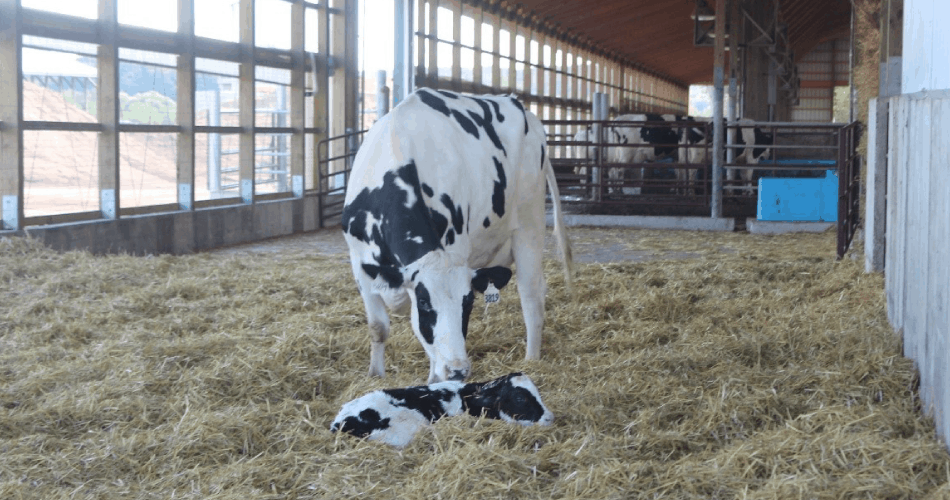
A few hours after birth, the calf is usually moved to its own individual pen. This best practice is essential for the health of the calf for several reasons:
- This ensures the best individual care and monitoring of both animals, especially in the first 24 hours, because it’s not uncommon for cows to ignore their calves.
- At birth, calves have very weak immune systems. It is extremely important to keep them in a clean, dry area away from harmful germs to prevent them from getting sick.
- Calves weigh 50-100 pounds at birth, while their mothers weigh anywhere from 900-1,500 pounds. Individual housing prevents the calf from being stepped on my it’s mother or other cows.
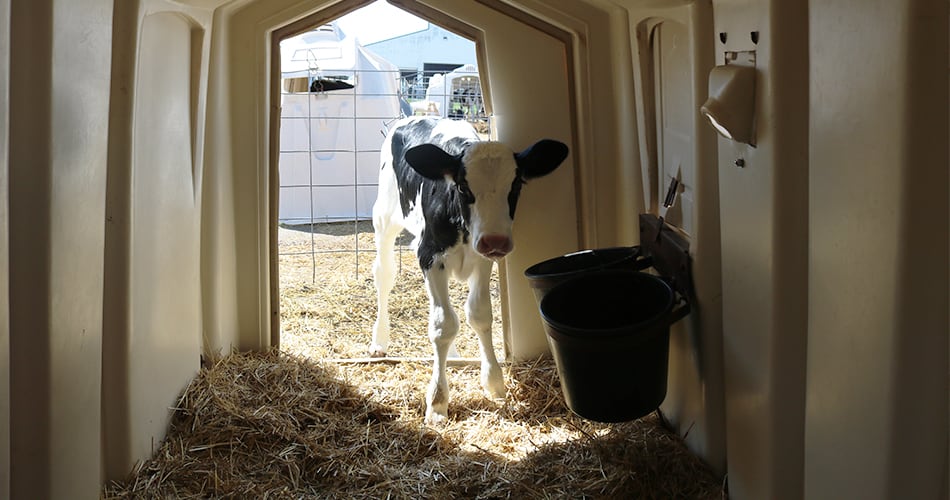
In an individual pen, the farmer can monitor exactly how much milk the calf is drinking instead of guessing if it was able to nurse on its own. Once the calf is in an individual pen it is fed colostrum – a cow’s first milk after calving. The colostrum is important because it is high in fat, protein and natural immune-boosting elements. Dairy farmers make sure the calf receives colostrum within 1-4 hours of birth.
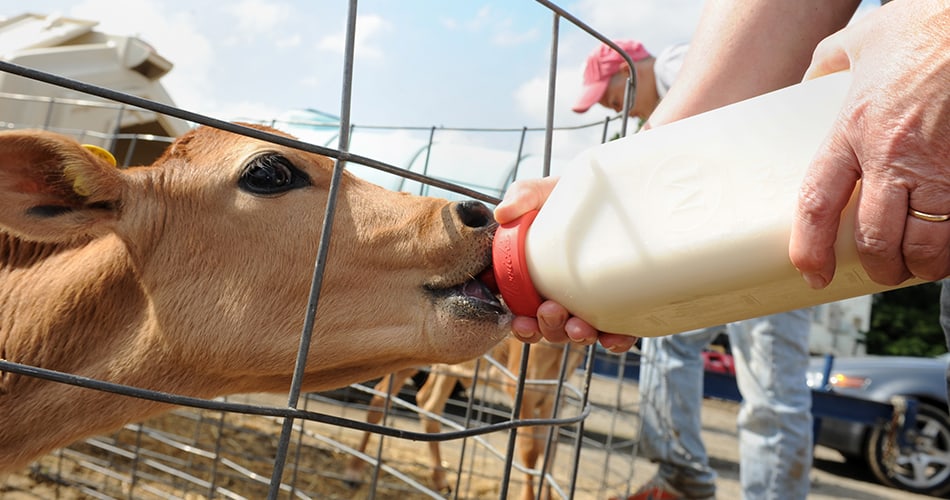
The calf will live in an individual pen and be fed milk or milk replacer twice a day. Their pens provide ample room for the calves to move freely, protects them from the weather and provides 24/7 access to fresh grain and water. Calves are typically housed in individual pens for about 2-3 months to ensure a healthy start before being moved to a group pen with other calves their age.
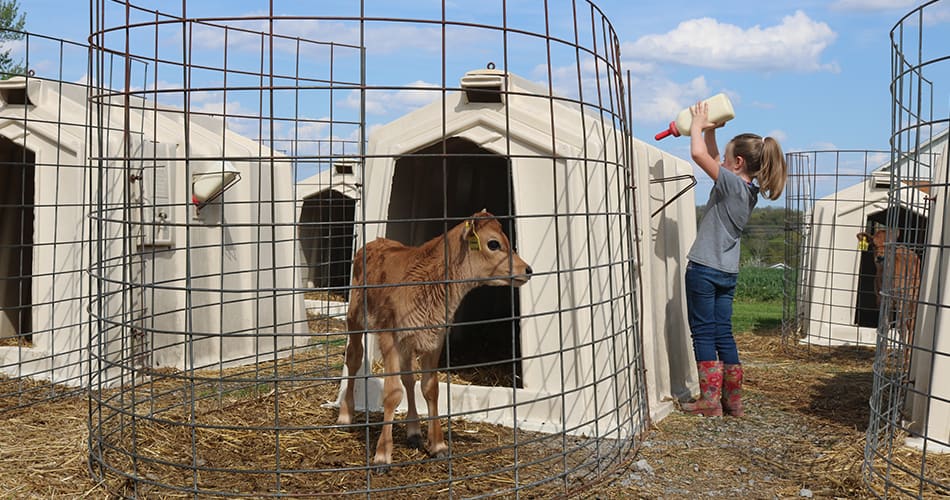
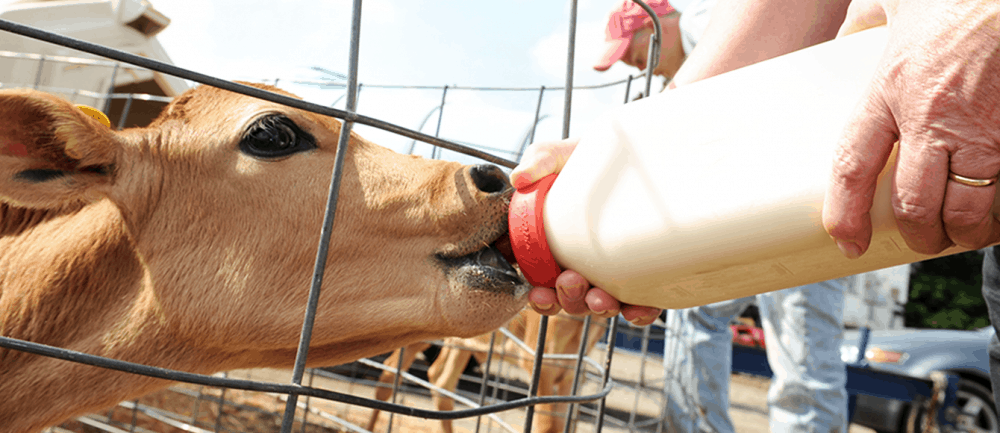

What does a calf starter consist of
Sooooooo cute
idk
see idk that is why we ask questions.
sooooooooooooooooo cute
soooooo cute
the cows are really cute!!!!
you are so nice
you are amazing
What???????????
Sooooooo cute
omg soooo cute and funnnnnnn
yess
ALL OF THEM ARE SO CUTE
SO CUTE!!!
Adorable!
all of them are so cute i what to keep one of them
is Lovey ok ? and i say hi to…. HI Lovey.
#cowrule#
Double hashtag??? You must love cows a lot.
Its adorable Also why do cows tend to ignore their babys? is it because they arent used to the other cow/how itsso small?
I found it very helpful when you elaborated on how newborn calves have a fragile immune system, and we need to be extra careful to prevent disease. My brother and I are interested in starting a livestock farm next year, so we’d like to learn everything we can about cows and calves, and your article will definitely help us. We appreciate your advice on how to protect a calve from germs and bacteria after birth. https://www.thegroveonline.com.au
Remember this is only for dairy cattle. Beef cattle calves are NOT seperated from thier mothers and do perfectly fine staying with them. If you think about how breast fed human babies do better because of the antibodies that are passed through the breast milk, the same goes for cows and cow milk.
fun fact only bulls (aka boy cows) are used for beef so the mom is ok
What is in the special diet?
Hi Jason! Check out this article to learn more about what cows eat: https://www.drink-milk.com/what-do-cows-eat
-Tristen, ADA Mideast Communications Manager
Is there a way to have the article printed? I would love my students to be able to work through the text.
Hi Sheri! Please feel free to print the article directly from our website!
-Tristen, ADA Mideast Communications Manager
i will kill to have one i want one so badly its to cute!!!!!!
well good news we get to have in vhe.
i will kill to have one i want one so badly its to cute!!!!!!
well good news we get to have in vhe.
this was the best thing ever
love it
so cute
Nice Thanks For the info
It is important for calfs to be moved to an individual pen soon after being born so they have isolation so no other calfs and be agressive to the infant cows. the importance of colostrum for a calf is it provides high amounts of nutrients and it promotes the immune system of the cow. i expected the farm to be way more run down and not have as much technology to milk the cows.
cow good